Rychnov nad Kněžnou and Surroundings
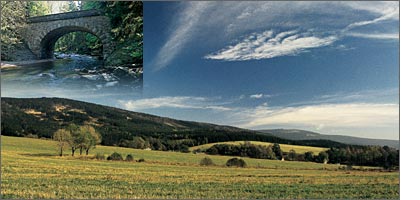 The region of the Orlické mountains and of the piedmont area is not of the vastest in the country, its variety of natural beauties and richness
of cultural monuments, however, range it among the most remarkable localities. A visit to the castles of Častolovice, Doudleby nad Orlicí, Opočno, Rychnov nad Kněžnou
and to the castle garden in Kostelec nad Orlicí means that you will be transported through history, filled with enthusiasm for a collection of painting,
of valuable books or weapons, as well as fascinated by the beauties of nature which the estate owners have managed to transform into an almost fairy-tale-like landscape.
Also the ruins of Potštejn, one of the once largest castles in Bohemia, surrounded by wooded slopes and overlooking the valley Anenské on the banks of the Divoká Orlice
river, attract more and more visitors every year.
The region of the Orlické mountains and of the piedmont area is not of the vastest in the country, its variety of natural beauties and richness
of cultural monuments, however, range it among the most remarkable localities. A visit to the castles of Častolovice, Doudleby nad Orlicí, Opočno, Rychnov nad Kněžnou
and to the castle garden in Kostelec nad Orlicí means that you will be transported through history, filled with enthusiasm for a collection of painting,
of valuable books or weapons, as well as fascinated by the beauties of nature which the estate owners have managed to transform into an almost fairy-tale-like landscape.
Also the ruins of Potštejn, one of the once largest castles in Bohemia, surrounded by wooded slopes and overlooking the valley Anenské on the banks of the Divoká Orlice
river, attract more and more visitors every year.
|
The history of Rychnov nad Kněžnou, a town with the population of almost 12 000, called the gateway of the Orlické mountains, goes back to the 13th century. It was first mentioned in writing in a charter of Přemysl Otakar II from the year 1258. The municipal coat of arms - a maiden riding a stag, the right to use green sealing wax, and the privilege of two annual markets were confirmed by the king Vladislav II in March 1488. By the ford of the foothill provincial route across the river Kněžna a settlement was established whose inhabitants made their living by agricultural and forest work, crafts and trade. Cloth manufacturers were the most widespread, hence the older name of Soukenický Rychnov. The cloth manufacturers have left behind a remarkable written document the Statutes of Cloth Manufacturers which is the second oldest preserved written document in the Czech language. In the year 1587 Rychnov was purchased by Kryštof Betengl of Neuenperk. He had the church of the Most Holy Trinity built and a bell-tower with the third largest 7200 kg heavy bell in Bohemia called Kryštof. In 1640 Rychnov passed into the hands of Albrecht Liebstejn of Kolowrat. The house of Kolowrat gave the town a beautiful Baroque castle (1676-1690 and 1713-1727), a large picture gallery within the castle, and at the beginning of the 18th century the Piarist College and grammar school. Of the famous natives and students there let us name e. g. the first professor of the Czech language and literature at Charles University, F. M. Pelcl (his grave was transferred from Prague to his native town in 1994), the translator of Homer - Otmar Vaňorný, Hugo Toman, or the writrer Karel Poláček. One of the graduates was also the composer Jiří Šlitr. Today the castle is again in the ownership of the house of Kolowrat, visitors can however still see the interiors and the rich picture gallery, the collections of the Museum of the Orlické mountains and the paintings of the Orlická Art Gallery. Close to the main square a synagogue was renovated and a memorial of Karel Poláček was installed there. The millitary stronghold Hanička near Rokytnice in the Orlické mountains attracts many visitors. It was built in the years 1935-1938 as part of the project of state defense, and above all against the threat of nazi Germany. The almost 52 km-long common border with Poland influences favourably the local development of tourism in both countries. A welcome improvement is the existence of four border crossings there - in Olešnice in the Orlické mountains, at Šerlich, in Orlické Záhoří and in Bartošovice. Amateurs of winter sports can choose to go to Deštné, Říčky, Rokytnice, Zdobnice, Olešnice and Bartošovice. The races of dog-teams in Deštné have gained in popularity and top quality championships in skibob riding take place in Deštné, and at Říčky it is the traditional international competition Skiinterkriterium. In the summer months horse riding is possible especially in Deštné. The foothill of the Orlické mountains offers a number of good quality open-air swimming pools and in Dobruška there is a covered swimming pool open all year round. |
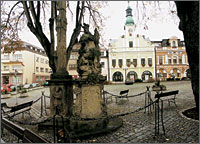 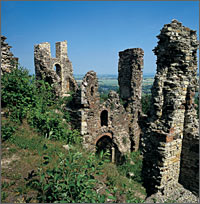 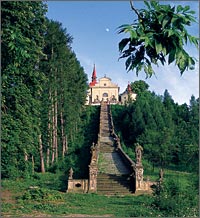 |
The contemporary cultural life includes the traditional film festival the Rychnov Eight, the national seminar Laughter in Film, the Šlitr Spring and the Poláček Summer. Art fans welcome exhibitions and concerts at the different castles. They can also come to see the innovative theatre performances within the Poláček Summer in Rychnov nad Kněžnou. The international encounter of falconers in Opočno and that of lacemakers in Vamberk are very popular events.
Suggestions for sightseeing and visits
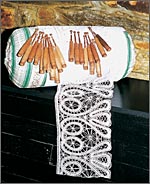 |
|